Case Studies
ABBAPOOLA CREEK
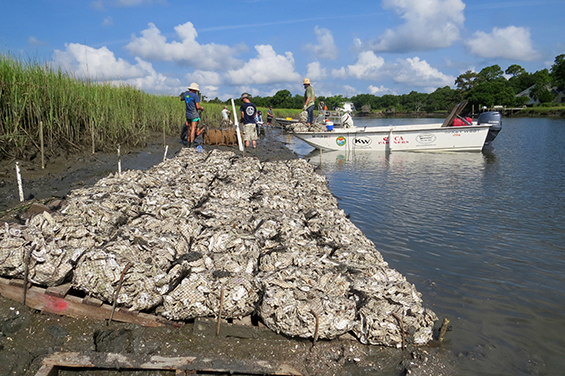
Images by SCDNR
SCDNR staff tested a number of living shoreline methods at this soft, low-energy site along Johns Island's Abbapoola Creek in June 2016, including the pictured oyster shell bags.
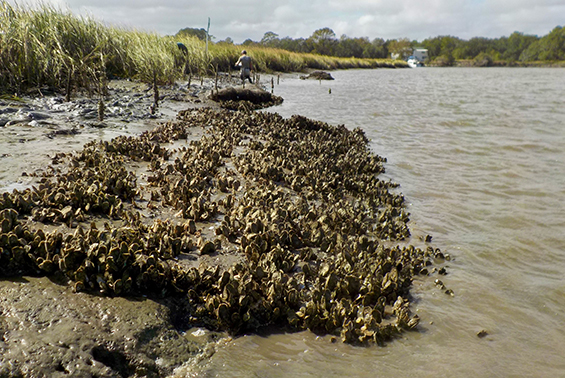
Images by SCDNR
By October 2017, healthy, young oysters had colonized much of the oyster shell bags' surface area, and over nine inches of sediment had accumulated behind the treatment (while an inch of erosion was observed at a nearby control site).
Big Bay Creek
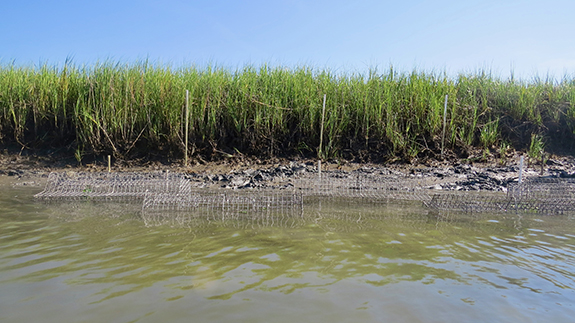
Images by SCDNR
In June 2016, staff installed manufactured wire reefs (MWRs), among other treatments, along a bend of Big Bay Creek with low wave energy and soft sediment.
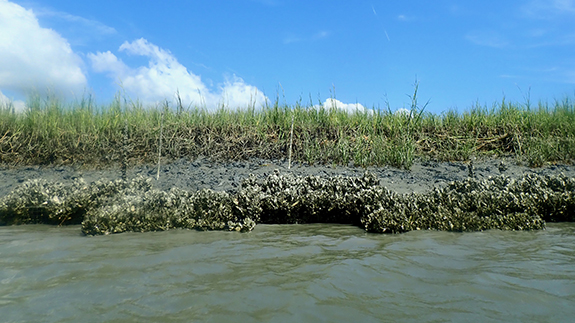
Images by SCDNR
Significant oyster growth and cover happened over the following three years, and by September 2019, marsh growth was starting to occur behind the MWRs.
Abbapoola Creek
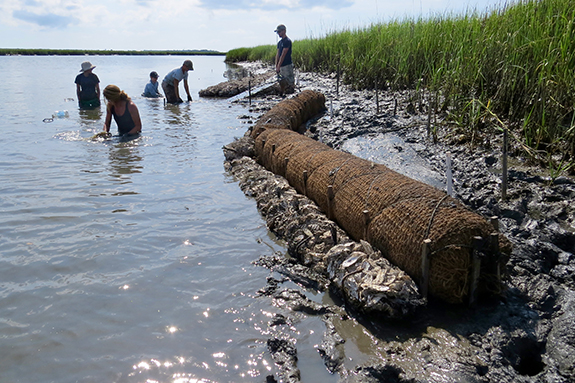
Images by SCDNR
In June 2016, biologists installed this coir log (composed of coconut fibers) with a row of oyster shell bags in front to prevent undercutting of the sediment.
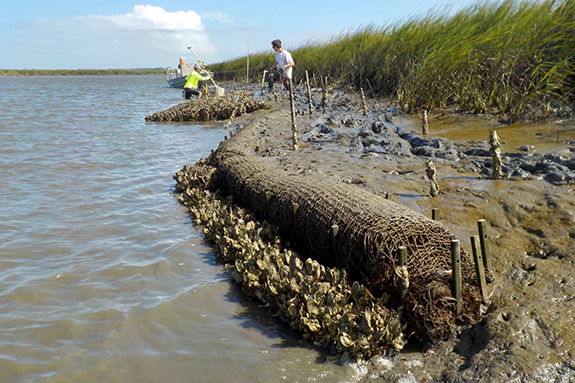
Images by SCDNR
A year later, in October 2017, the log remained in place and the elevation of the marsh sediment behind it had increased. The oyster shell bags in front had also successfully attracted new oyster growth.
Jeremy Island
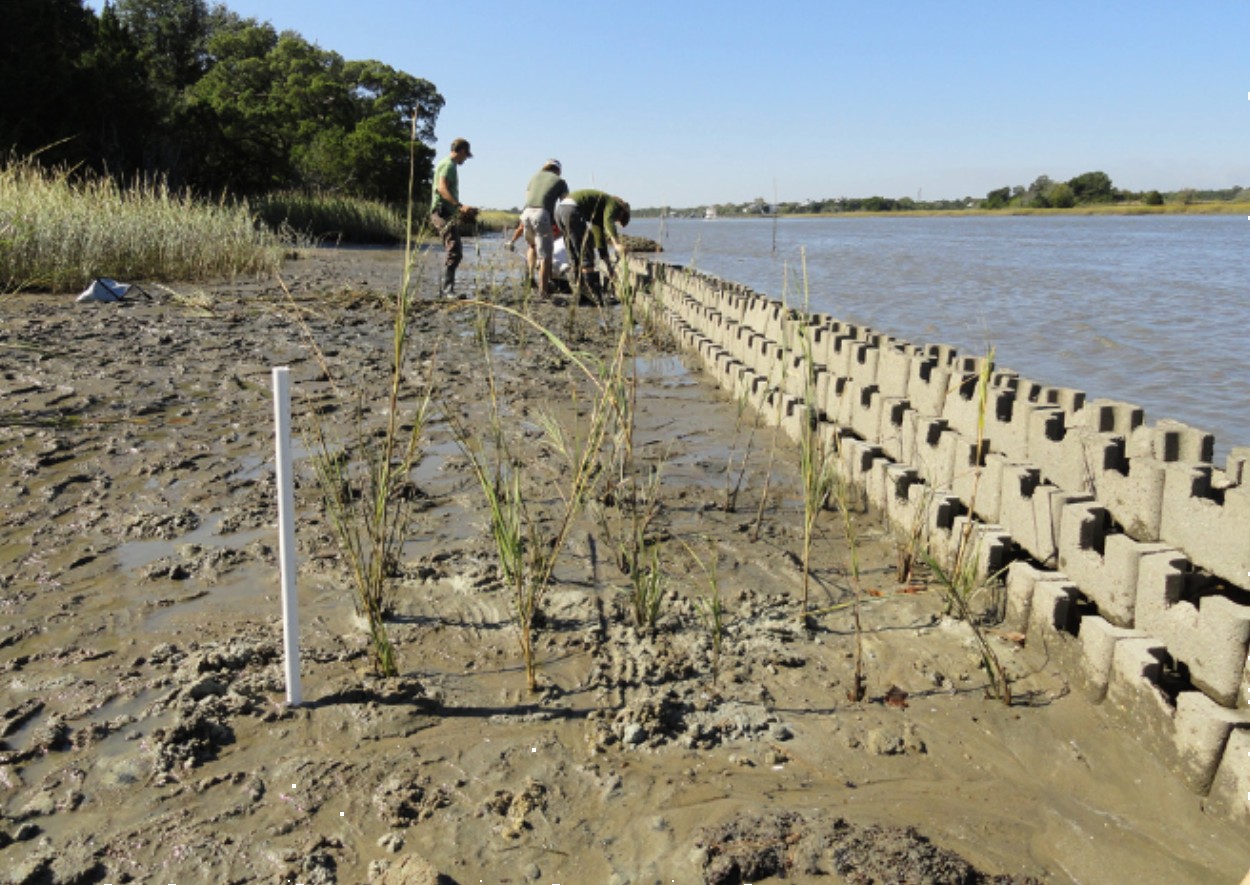
Image by Joy Brown, TNC SC
In 2011 marsh grass was transplanted at the Oyster Castle reef site.
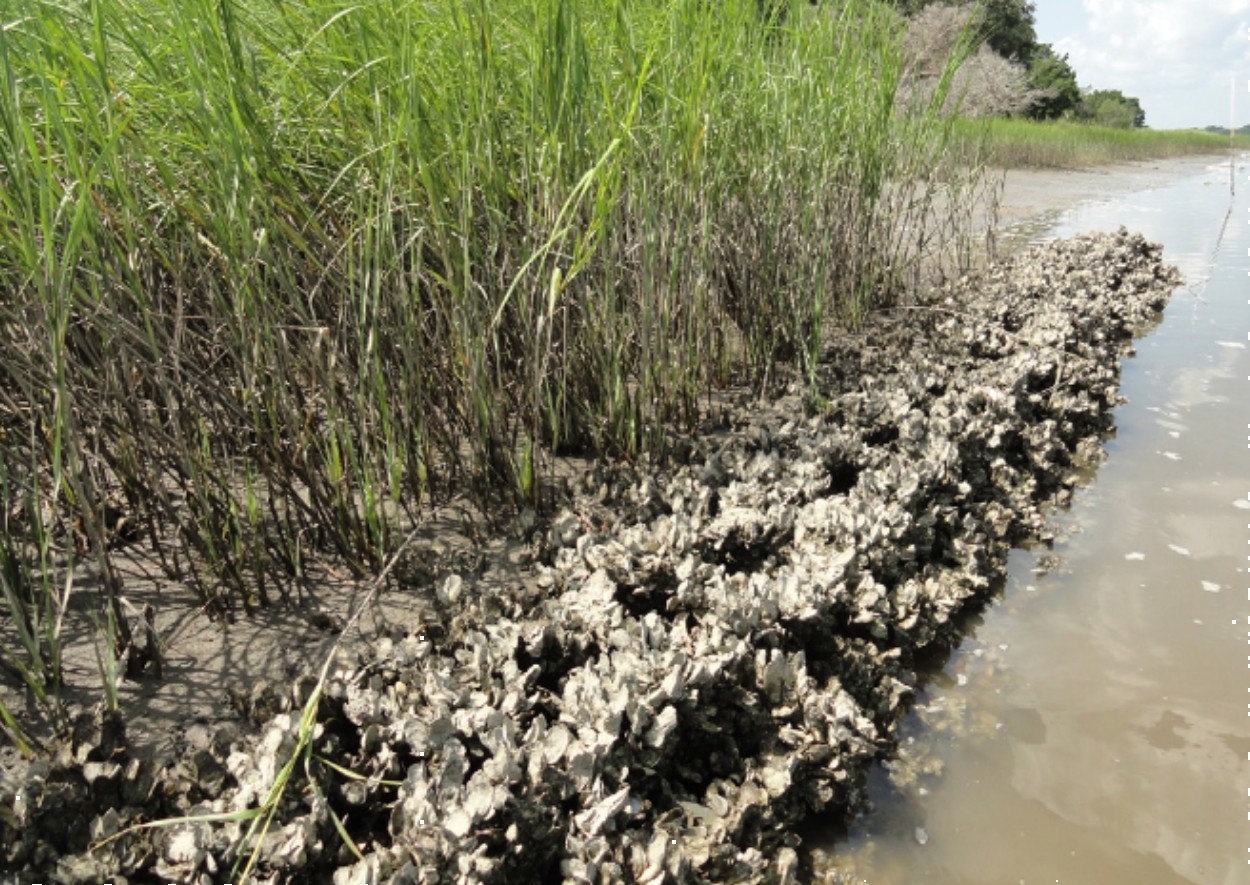
Image by Joy Brown, TNC SC
By 2017 oyster growth soon covered the Oyster Castles, allowing natural marsh grass to fill in behind the reef.
Goldbug Island
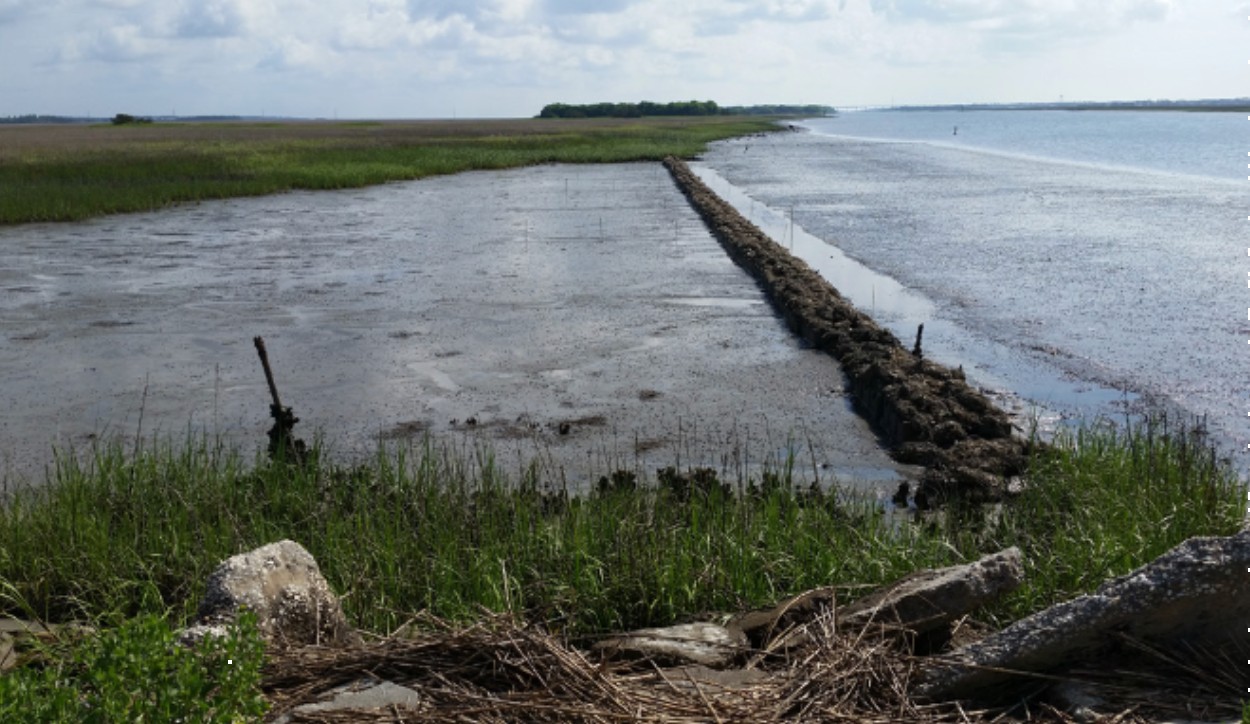
Image by Joy Brown, TNC SC
The reef was installed in April 2016 and made of wooden pallets, Oyster Castles, and bagged oyster shell. Prior to its installation, heavy wave and boat activity had caused the marsh to erode into a U-shape.
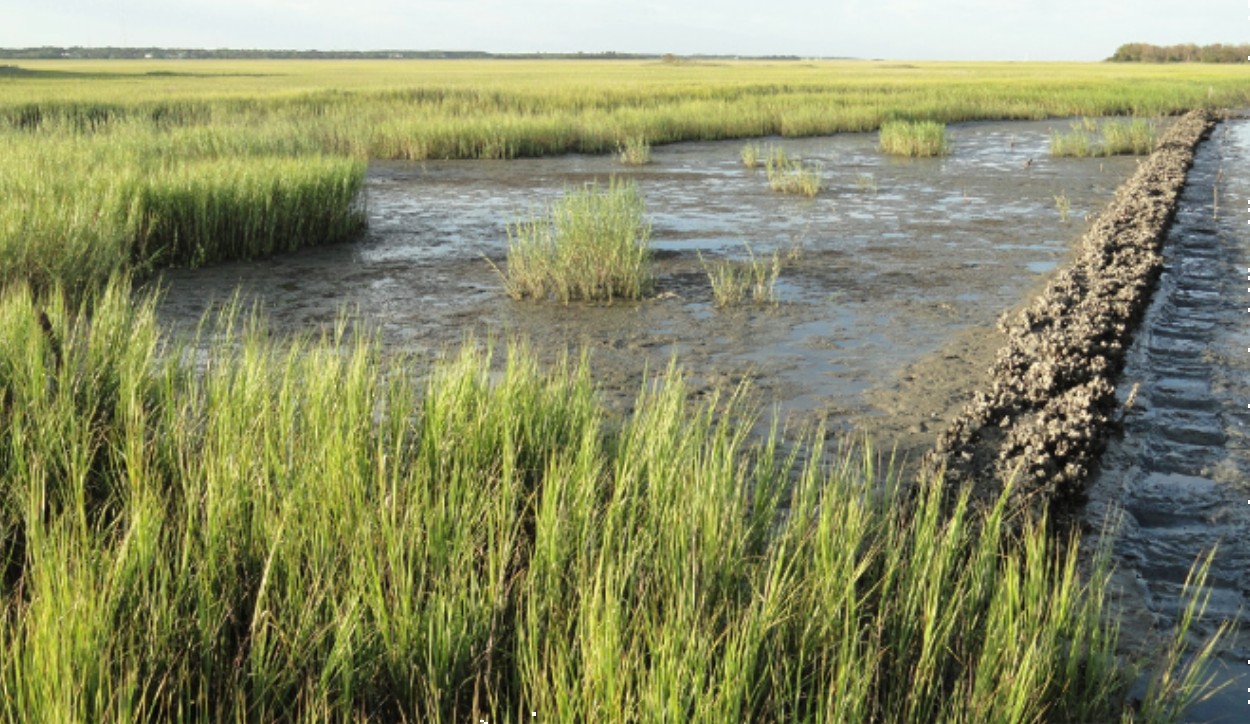
Image by Joy Brown, TNC SC
By July 2019, wave attention and sediment accretion behind the reef had stabilized the shoreline enough to allow for significant growth of marsh grass. Multiple size classes of oysters are now thriving on the reef.
Palmetto Plantation
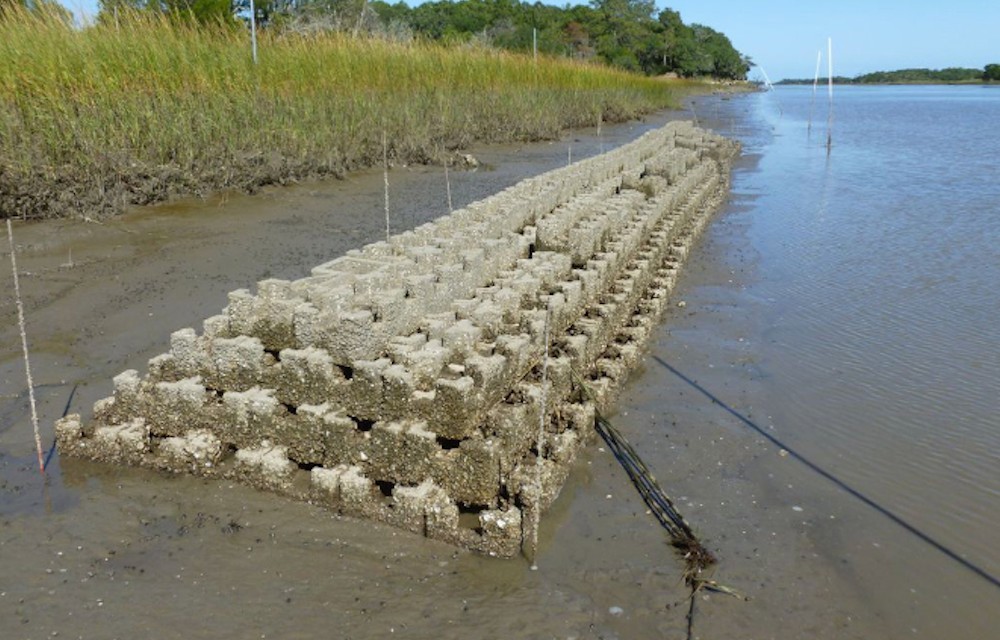
Image by Joy Brown, TNC SC
A single linear reef cluster was installed in 2012 at the mean low tide line along the Atlantic Intracoastal Waterway, across from the Cape Romain National Wildlife Refuge.
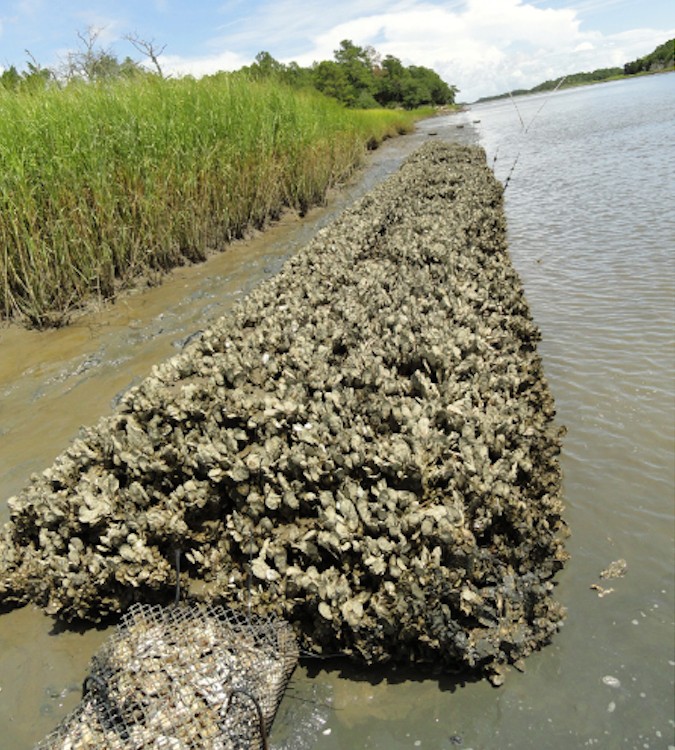
Image by Joy Brown, TNC SC
Three years after installation, significant oyster growth can be observed on the Oyster Castles. Within five years, the sediment increased behind the reef and the native marsh vegetation grew to touch the back side of the oyster reef.
